




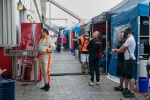
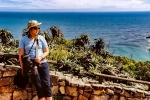
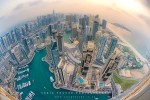

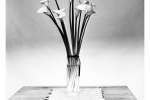
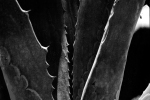

An industrial photographer captures images in industrial settings for a variety of purposes. These types of photographers may be employed by various industries to take photographs that can be used in catalogues, newsletters, or within the company itself. In some cases, an industrial photographer may take artistic pictures for galleries or shows, using industry as the subject matter of the photographs. Most industrial photographers work on a freelance basis, accepting jobs from clients who can make use of their specific skills or style.
These clients may need photographs for a variety of purposes and the photographer will need to listen to what the client wants in order to provide the appropriate images. The industrial photographer may take photos for advertisements or publicity, which need to make the subject look clean and marketable. A client may also need photographs that captures what a subject really looks like, without a lot of artistic flair, and photographers need to be able to adjust their styles to match the needs of the client. In essence, it is a form of photojournalism, portraying the company in an good light, keeps their brand marketable, even if their product produced is not environmentally so.
A series of photographs may also be created by an industrial photographer in order to document an industrial process. This may mean taking photographs for each step needed to manufacture a product or photographs that show each part of a factory, refinery, oil and gas facility or power plant. Large construction projects can also be documented through a series of photographs taken by an industrial photographer.
Not all types of professional photography will allow someone to rely on a definitive “look”, but architectural and industrial photographers are actually wise to create a recognizable style. This might mean always shooting from a 45-degree angle, using reflections, or creating “expansive” spaces from even the smallest rooms or structures.
Consider that most architectural and industrial photographers will usually have to really take in a lot of area through the lens of their camera – regardless of their personal style. This is the reason that a wide angle and tilt-shift lens work tends to be mandatory for this area of specialization. For instance, the Twin Towers in the heart of Kuala Lumpur would need a wide angle if recorded from their two massive bases, but so too would an average board room if the entire space was to be documented in the single shot! The tilt-shift lens would correct any lines of convergence, keeping buildings and tall chimneys straight, keeping the image architecturally sound in form.
Click on the images below to view an enlarged single image.
All my images are available for purchase as prints. Digital images can be used under license agreement. Should you wish to purchase or license my images, please click here for more information, so I can assist you with your needs.
There are no upcoming events.
This is a demo store for testing purposes — no orders shall be fulfilled. Dismiss